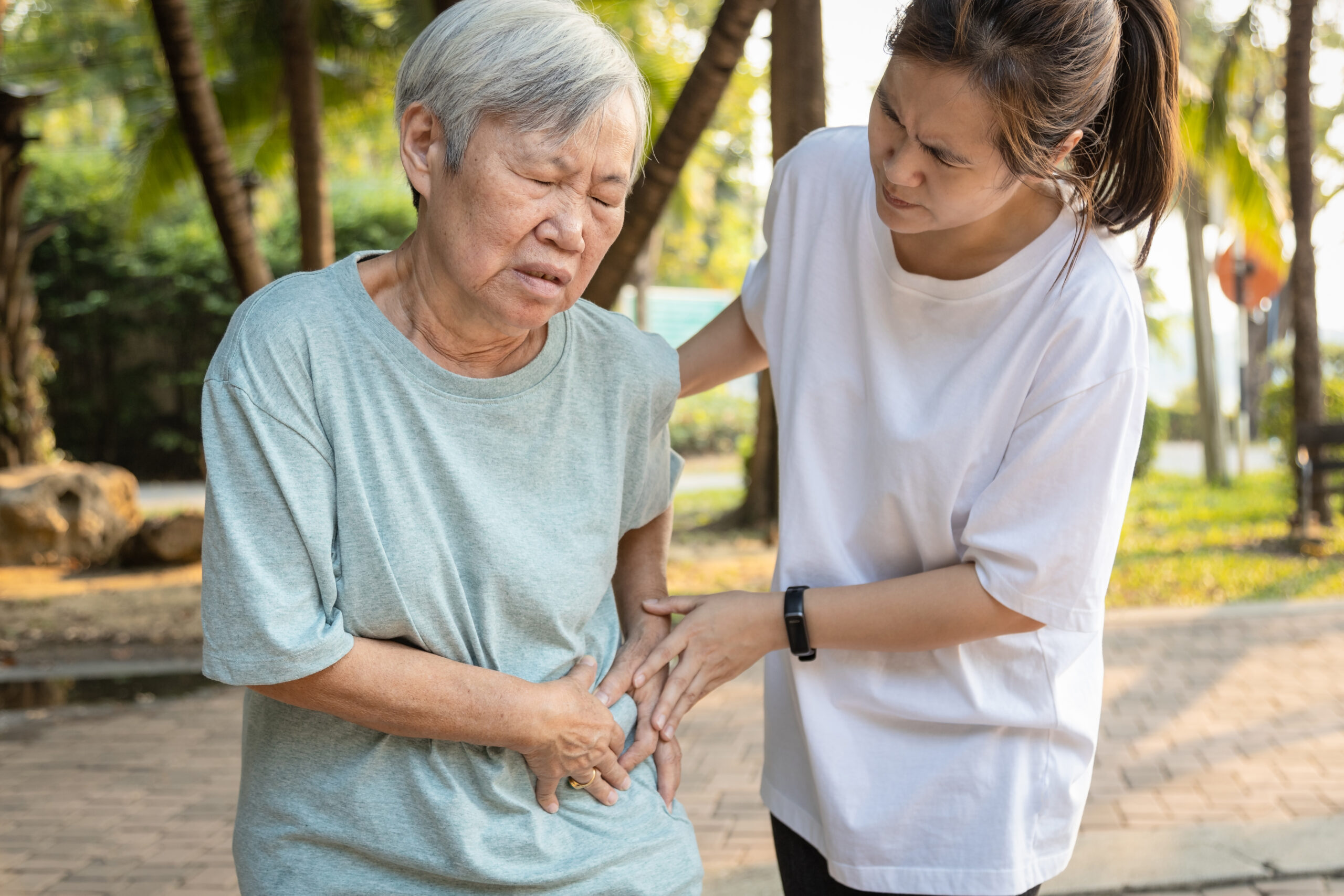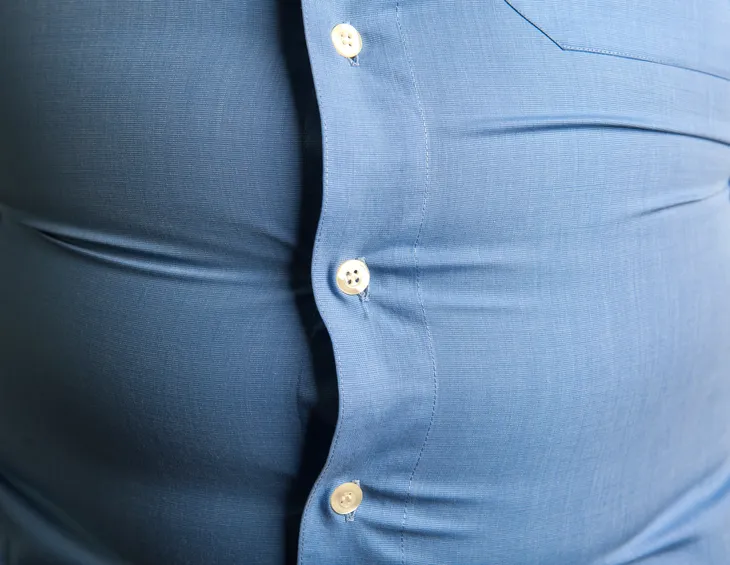- Diverticulitis is a common digestive system condition
- More common in seniors between 60 and 85 years old, it is caused by the inflammation or infection of diverticula, small pouches which form along the large intestine
- Symptoms include abdominal pain, fever, nausea and bowel irregularity
- Most cases resolve themselves, although your doctor may prescribe antibiotics
Diverticulitis is a common condition that affects the digestive system. It’s rare for it to occur in a person who’s under 30 and is most common in those aged 60 through 85. In those who have this condition, diverticula, which are small pouches, form along the large intestine or other parts of the digestive system. These diverticula can become inflamed or infected, leading to an array of symptoms that are characteristic of diverticulitis.
Symptom: Abdominal Pain and Tenderness
Most often, diverticulitis pain occurs on the lower left side of the abdomen; however, it can be more prominent on the right. It’s worth noting that right-sided diverticulitis is typically seen in those of Asian descent — in fact, between 55 and 70% of cases in Asians occur on the right side.
The abdominal pain that’s associated with this condition often comes on quickly and can remain persistent for several days. Many who’ve had it describe the feeling as tenderness and sensitivity, and in many cases, the pain is relatively mild. However, a handful of people who experience diverticulitis will experience severe or worsening pain over several hours or days. In any case, abdominal pain should always be investigated by a medical doctor.
Symptom: Fever
When diverticula (those small pouches that form along the large intestine or digestive tract) become infected, the body reacts accordingly by attempting to fight infectious cells with fever. Typically, any fever associated with diverticulitis is low-grade, meaning it’s between 99.6 °F and 100.3 °F; however, a higher fever may be present in cases where the infection is more serious.
Symptom: Nausea and Vomiting
Many people with diverticulitis experience nausea, which is sometimes accompanied by vomiting. This can happen because when the diverticula swells and becomes inflamed, it can be difficult for food to pass through the digestive tract properly, often leaving food that’s only partially digested sitting in the stomach or trapped in the large intestine.
Symptom: Bowel Irregularity
More often than not, bowel irregularity that accompanies diverticulitis is characterized by severe constipation. However, in some cases, individuals may experience bouts of watery diarrhea, typically alternating with periods of constipation. This symptom is a result of diverticula blocking the route from the stomach to the bowel, making it impossible for solid waste to exit the body. This leads to either constipation (a complete lack of bowel movements, infrequent bowel movements or severe difficulty with bowel movements) or diarrhea (loose, watery stool).
What Causes Diverticulitis?
While doctors and researchers don’t know exactly what causes diverticulitis, it’s known that diverticula develop along the colon and large intestine in weaker spots, which occur naturally. These weak spots may be more vulnerable to diverticula when certain risk factors are present.
The Connection Between Age and Diverticulitis
According to the Cleveland Clinic, diverticulitis is most common in adults aged 40 and over. In the U.S., this condition occurs in approximately 10% of people aged 40 and above, and in those aged 60 and above, it occurs in as much as 50% of people. In adults aged 85 and older, diverticula affects more than 65% of individuals.
Diverticulitis Risk Varies Depending on Sex
According to a Canadian study, the prevalence of diverticulitis was higher in men aged 40 to 49, with 45 out of 100,000 males experiencing the condition and only 38 per 100,000 females being diagnosed with it. However, as age increases, the risk of diverticulitis grows in women, with those aged 90 and above accounting for 60.7% of diverticulitis hospital admissions. Other studies conducted in the U.S. and the U.K. have seen similar results, with the highest risk level shifting from men to women in older age groups.
 Monkey Business Images / Shutterstock
Monkey Business Images / ShutterstockLifestyle Factors May Increase Diverticulitis Risk
Individuals who eat a low-fiber or high-fat diet are typically at a higher risk of developing diverticula — in particular, those who don’t eat many fruits or vegetables, beans and legumes, whole grains and nuts, as well as those who eat above-average amounts of red meat or fatty foods, like fast food and processed snacks. Additionally, people who smoke and those who don’t exercise may be putting themselves at risk.
Medications That Irritate the Digestive Tract May Cause Diverticulitis
Several medications, including over-the-counter nonsteroidal anti-inflammatory drugs (NSAIDs) that are used for pain and fever, as well as steroidal drugs and opioid prescriptions, may put individuals at risk of developing diverticula or irritating diverticula already present in the digestive tract. That said, moderate use of these medications is unlikely to cause any issues.
Diagnosing Diverticulitis
The symptoms of diverticulitis can mimic those of a variety of other illnesses, including irritable bowel syndrome and noroviruses. As such, seeing a doctor who can diagnose these symptoms and determine a treatment plan is important.
When assessing these symptoms and diagnosing diverticulitis, a doctor will typically rely on past and current health data, as well as the risk factors mentioned above, to determine if diverticulitis testing is necessary. When it is, patients can expect a physical exam that includes checking parts of the abdomen for tenderness or pain, as well as temperature and weight checks. In most cases, doctors also request stool, urine or blood samples, and in more severe cases, a CT scan or colonoscopy.
Common Treatments for Diverticulitis
In most cases, diverticulitis resolves itself when severe complications aren’t present. In fact, about 95% of people who develop the condition don’t require hospital care. When infection is present, doctors may prescribe antibiotics, particularly for patients who are older or have other underlying health conditions and need help fighting infection. Additionally, antispasmodic medications may be used to combat pain.
In severe cases, surgery to remove the sigmoid colon and a small part of the rectum may be required.
In addition to medical treatment, dietary and lifestyle changes are often incorporated to prevent further flare-ups and complications. This can include quitting smoking, adding fiber and reducing fat in the diet, or incorporating regular exercise into the patient’s schedule.
Diverticulitis May Be Associated With Body Weight
Studies conducted in the U.S. have shown higher rates of diverticulitis in males with higher body mass indexes, waist circumferences, and waist-to-hip ratios. While more research is needed to determine the correlation between body weight and diverticula development, researchers believe chemical changes in digestive tissues may cause inflammation in the digestive tract. Additionally, it’s thought that intestinal microflora changes in those with higher body weights may increase the risk of diverticulitis, and problems with vascular integrity in those who are overweight or obese may lead to diverticular bleeding and infections.
When to See a Doctor
If you suspect you may be suffering from diverticulitis, or if you’re experiencing symptoms such as ongoing abdominal pain and sensitivity, fever, nausea, vomiting or constipation, it’s important to have your condition assessed by a doctor. While the diagnosis may not be diverticulitis, it’s always best to rule this and other conditions out. With a proper medical diagnosis, you’ll be able to access adequate treatment and increase your chances of a prompt recovery.















